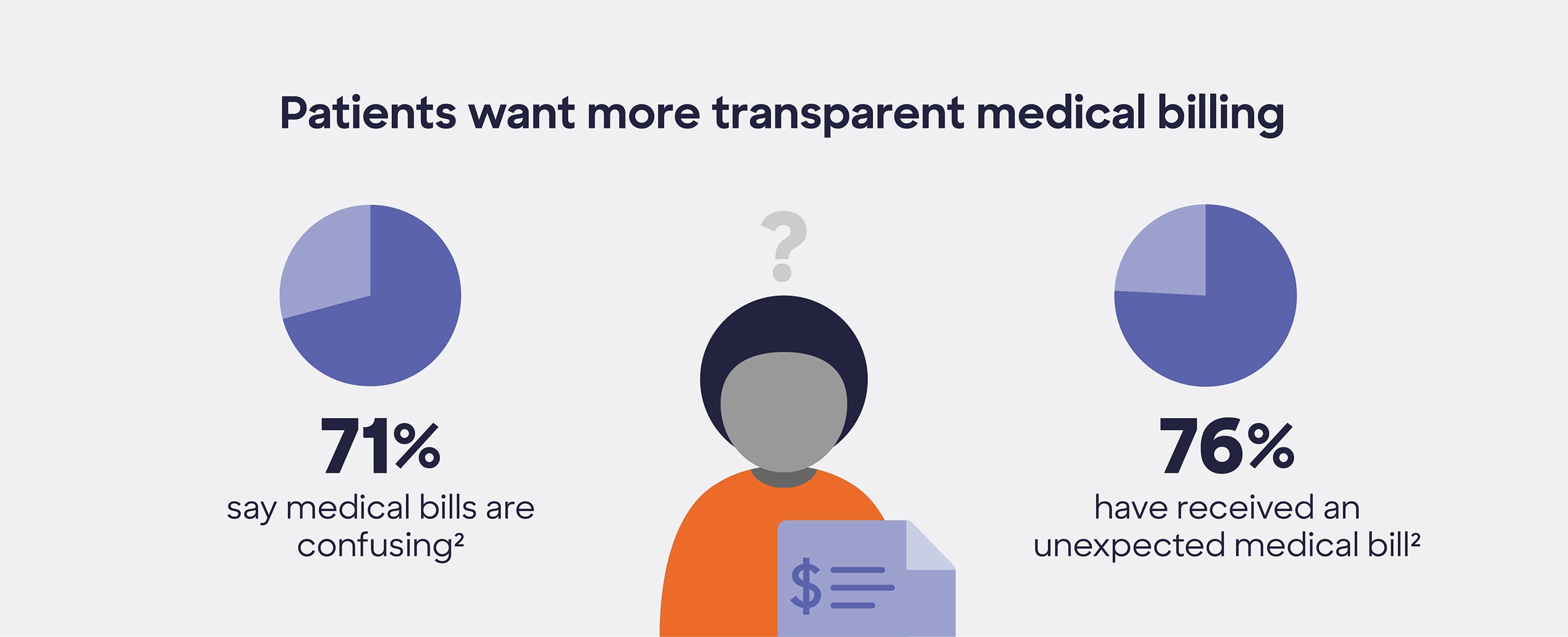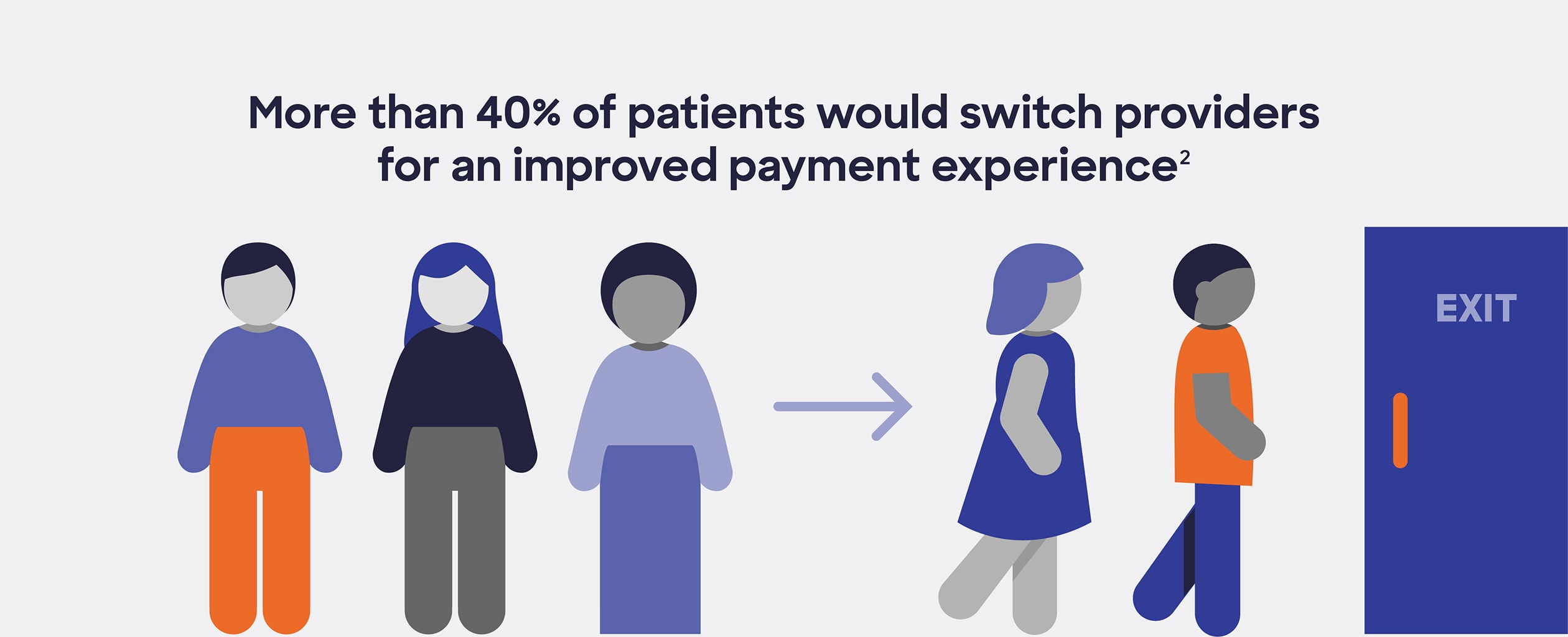How Digital Payment Solutions Are Transforming Healthcare
Digital Payments and Healthcare
In retail, digital payment solutions have permanently changed consumers’ expectations about how they pay for goods and services. Once a novel convenience, innovations like digital wallets are now integral to creating a seamless customer journey—but in healthcare, the shift to digital payment enablement has been driven by a unique set of challenges.
In recent years, many industries quickly adapted to consumers’ increased desire for digital payments. However, beginning in 2020, the healthcare industry found that it needed to focus on using digital solutions to respond to a global health crisis. Providers adopted digital tools and strategies that helped them deliver care—like connecting to patients via telehealth appointments, distributing testing, and managing the logistics of rolling out vaccines.
Now, as digital payments have become common across other sectors of the economy, patients are looking for the same streamlined experiences from their healthcare providers that they encounter elsewhere in their lives. To meet these expectations, providers are looking to digital enablers to help them contemporize their payment systems, easing the friction patients experience when navigating healthcare billing processes.
Digital payment systems enhance transparency
Between 2022 and 2023, 54% of patients reported experiencing at least one pain point when paying for healthcare expenses,1 and patients’ medical bills often include details that may be difficult for those outside the healthcare and insurance industries to understand. This can be a source of frustration for patients and their families, who are already worried about how much they owe, what their insurance will cover, and when payments are due.

Enabling digital payment systems can offer healthcare providers an opportunity to build trust with transparent interfaces that clearly itemize the services provided and the cost breakdown for every claim. These systems also serve as an all-in-one, secure space for patients to easily navigate appointments, bills, testing, and procedures, and to spot errors so that mistakes, discrepancies, and misunderstandings can be addressed more quickly and reflected in the payment system right away.
This 360-degree view can ultimately help to empower more educated and confident patients who can see how every dollar is spent and exactly what is covered by their insurance plans and plan discounts.
Digital payment options encourage timely payments
Paper and postage are costly, but the expense of paper billing is beyond monetary. Payment enablers should highlight and focus on the positive impact on personnel time and material expenditures that enabling digital payment solutions can provide. Physicians spend an estimated 21% of their time on non-clinical paperwork,3 and for the healthcare administrators who manage payments, processing manual transactions can quickly add hours onto the workday.
For patients, paper bills sometimes arrive months after an appointment or procedure, which may add to any confusion they have when they review the bill and possibly lead to a delay in payment. If patients choose to pay by check, it can take up to five days for a check to be mailed in the United States,4 then another two to five for processing.5
With interfaces that simplify the medical billing cycle, digital payments can enable providers and patients to complete their side of billing transactions faster they can also help providers save an average of four minutes per transaction.6 And when built to facilitate access and ease-of-use, healthcare digital payment systems can help increase the likelihood that patients will pay a bill on time, freeing providers from time spent managing overdue bills.
One digital payment solution that can save providers time and money is Account Updater, which makes it possible to increase transaction approval rates, reducing payment interruption and patient attrition for a seamless transition from an old credit card account number to a new one. In this way, patients can pay off larger medical bills in a series of smaller payments, decreasing the likelihood of write-offs and saving providers the time and expense of sending statements.

Digital healthcare payments support patient satisfaction
Seventy-seven percent of patients say that receiving and paying bills digitally would positively impact their relationship with their healthcare provider.7 This may be due to the ways that the transparency and ease-of-use delivered by healthcare digital payment systems create opportunities for providers to increase their focus on patient care.
When hospitals, clinics, and doctor’s offices digitalize payments processes, they can gain time to devote to patient care. In turn, patients benefit from that enhanced level of care, as well as the price transparency and access to information that digital payment platforms provide.
To take advantage of Discover® Global Network’s Account Updater Services, enablers can contact their acquirer or digital partner.
Digital payments are key to the future of healthcare
Sixty-four percent of healthcare consumers are highly satisfied with tracking their medical bills and insurance payments through a digital portal,1 and optimizing and elevating digital payment solutions with a focus on customer service and efficiency can support healthcare providers as they look to the future. Digital enablers can help providers of all sizes improve their billing and payment processes by creating customized solutions built for an organization’s unique needs and budgets, as well as the capabilities to mitigate issues in implementation and protect from cybersecurity risks.
Download Article
The information provided herein is sponsored by Discover® Global Network. It is intended for informational purposes, and is not intended as a substitute for professional advice.
1.
(2023) How Patients Want to Streamline Healthcare Payments. PYMNTS. Accessed 16 April 2024 from https://www.pymnts.com/study/digital-platform-promise-healthcare-online-payment-portal/
2.
(2023, June 22). Healthcare Payments Need a Dose of Money Mobility. PYMNTS. Accessed 16 April 2024 from https://www.pymnts.com/healthcare/2023/healthcare-payments-need-a-dose-of-money-mobility/
3.
Wood, Debra. (2023, June 23). Average Time Doctors Spend With Patients. AMN Healthcare. Accessed 16 April 2024 from https://www.amnhealthcare.com/blog/physician/locums/average-time-doctors-spend-with-patients/#:~:text=The%20Physician%20Foundation%20survey%20found,satisfying%20aspect%20of%20their%20practice.
4.
Office of Inspector General. How long does it take my mail and packages to get here? United States Postal Service. Accessed 16 April 2024 from https://www.uspsoig.gov/focus-areas/did-you-know/how-long-does-it-take-my-mail-and-packages-get-here
5.
Egan, John. (2023, May 19). How Long Does It Take a Check to Clear? U.S. News & World Report. Accessed 16 April 2024 from https://www.usnews.com/banking/articles/how-long-does-it-take-a-check-to-clear
6.
Barbato, Bill. (2024, January 29) Why you should prioritize digital payments. Optum. Accessed 16 April 2024 from https://www.optum.com/en/business/insights/financial-services/page.hub.why-you-should-prioritize-digital-payments.html
7.
(2023, November 16) The Results are In: Digital Payments are a Prescription for Patient Satisfaction. Onbe. Accessed 16 April 2024 from https://www.businesswire.com/news/home/20231116349552/en/The-Results-are-In-Digital-Payments-are-a-Prescription-for-Patient-Satisfaction
© DFS Services LLC